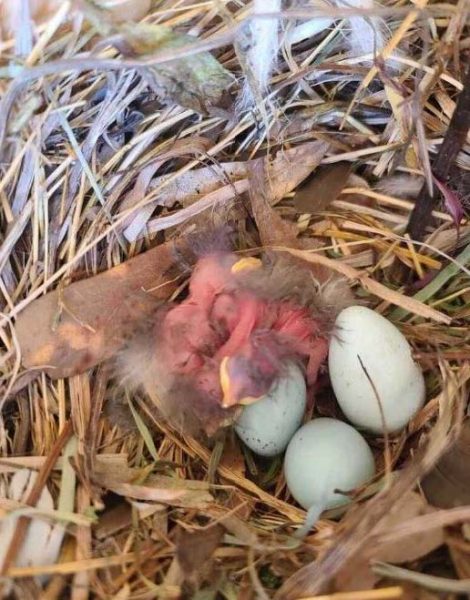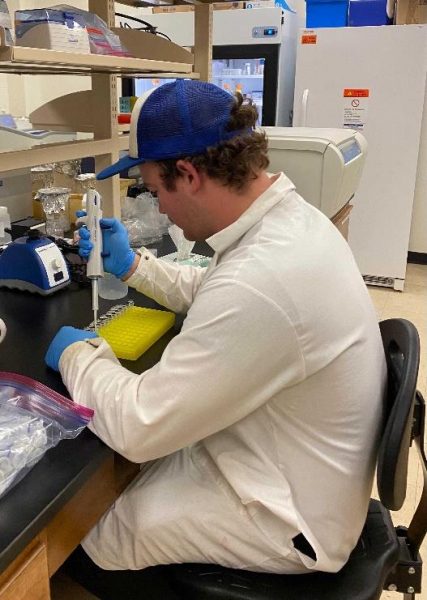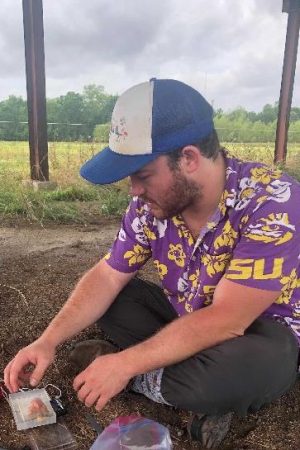In bird species, the timing of nestling hatching can be synchronous, asynchronous, or semi-asynchronous (Lee and Lima, 2016). Many songbirds begin active incubation after laying their penultimate egg (second to last), which typically leads to synchronous hatching of all but the last nestling (White and Woolfenden, 1973). This hatching synchronicity results in nestlings of relatively equal size and body condition, except for the final nestling, which often has difficulty acquiring food in the presence of its larger siblings (Soley et al., 2011). As a result of climate change, temperatures are rising in many areas across the world which can disrupt the timing of incubation if ambient temperatures exceed the minimum critical threshold for development. This means that earlier-laid eggs may begin development prior to the completion of the clutch, which produces broods with distinct size hierarchies due to variation in hatch rate.

In broods that hatch asynchronously, smaller nestlings are expected to have reduced success begging for food from parents, which may impose a chronic stressor on these nestlings throughout the period of nestling development. We know that chronic exposure to stress can have long-term negative impacts for individuals (Sapolsky et al. 2000), particularly if exposure occurs during development (Honarmand et al. 2016). To understand the physiological effects of asynchronous hatching due to ambient temperatures, I manipulated the temperature of the nest box during the egg-laying period and collected morphological measurements and blood samples from the nestlings.

The purpose of this lab exchange was to learn how to perform assays on telomere length in nestlings from the study from the lab of Dr. Britt Heidinger at North Dakota State University. Telomeres are non-coding nucleotide sequences at the ends of chromosomes whose decreased length has been linked to increased mortality rates in bird species (Wilbourn et al. 2018). We know that adverse life conditions can reduce the length of telomeres, which is why they were included in this study.
Prior to the exchange, I extracted DNA from red blood cells collected from nestlings at two timepoints during the study and boarded my flight with the extracted DNA in my carry-on bag. Over the course of six days in Fargo, I performed telomere assays on 324 samples with the help of the Heidinger lab. These assays included running qPCR with primers for telomeres and GAPDH as a control, which was exciting because I had never (successfully) done qPCR before. I learned a lot of helpful insights and tips on how to improve my technique when working on the molecular scale, which I have included in my own research since then. I’m very thankful for the opportunity to learn and improve critical skills for my research with the Heidinger lab, all made possible by funding from the RCN. I look forward to seeing what comes out of the data!

References
Honarmand, M., Thompson, C., Schatton, A., Kipper, S., & Scharff, C. (2016). Early developmental stress negatively affects neuronal recruitment to avian song system nucleus HVC. Developmental Neurobiology, 76(1), 107-118.
Lee, J., Lima, S. (2017). Hatching asynchrony in birds: Multiple nesting attempts and the nest failure hypothesis. The Auk 134(1):1-10.
Sapolsky, R., Romero, L., & Munck, A. (2000). How Do Glucocorticoids Influence Stress Responses? Integrating Permissive, Suppressive, Stimulatory, and Preparative Actions. Endocrine Reviews, 21(1):55-89.
Soley, N., Siefferman, L., Navara, K., & Hill, G. (2011). Influence of Hatch Order on Begging and Plumage Coloration of Nestling Eastern Bluebirds. The Wilson Journal of Ornithology, 123(4):772-778.
White, S., & Woolfenden, G. (1973). Breeding of the Eastern Bluebird in Central Florida. Bird-Banding, 44(2):110-123.
Wilbourn, R., Moatt, J., Froy, H., Walling, C., Nussey, D., Boonekamp, J. (2018). The relationship between telomere length and mortality risk in non-model vertebrate systems: a meta-analysis. Philosophical Transactions of the Royal Society B: Biological Sciences, 373(1741)